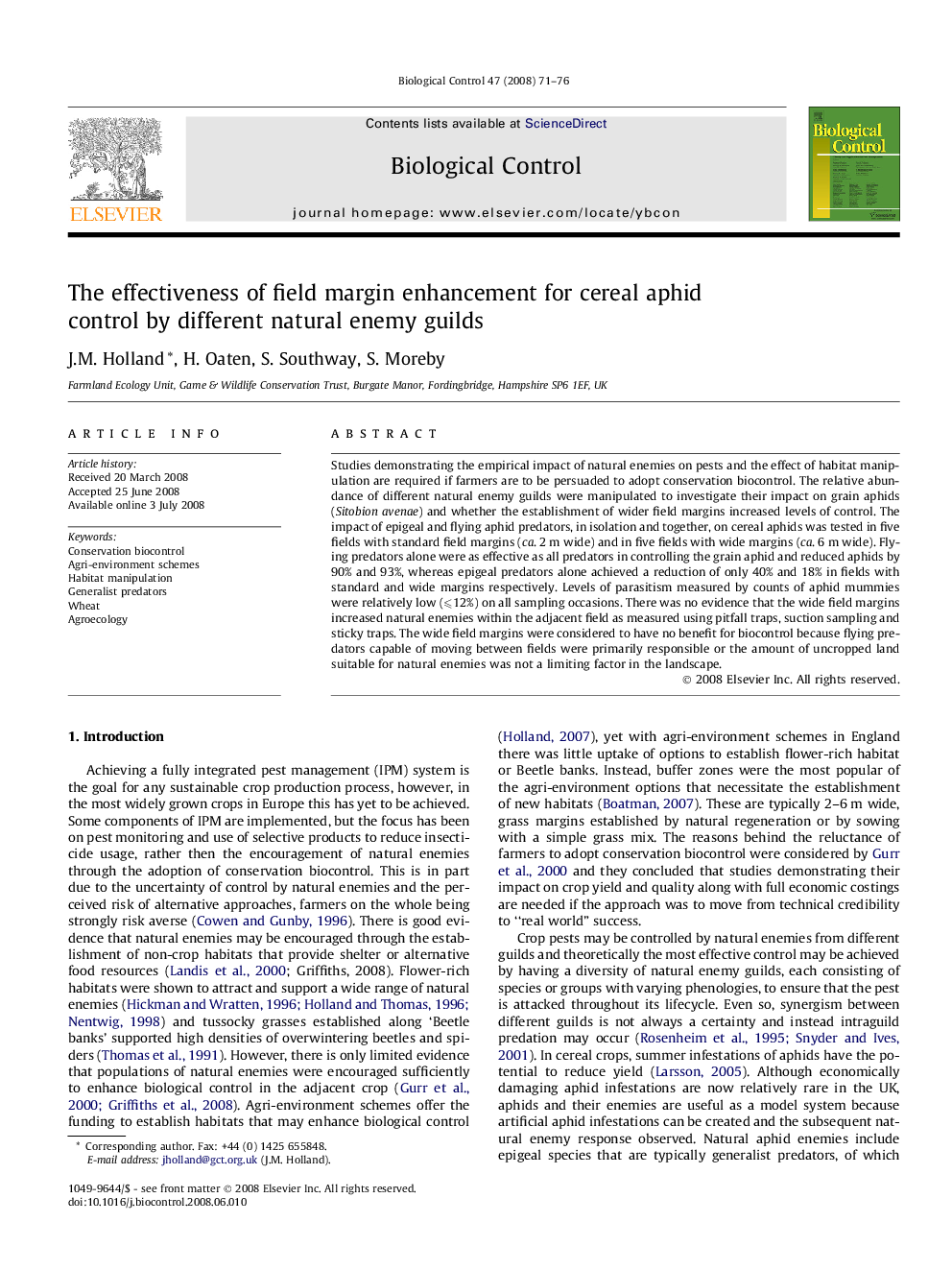| Article ID | Journal | Published Year | Pages | File Type |
|---|---|---|---|---|
| 4504773 | Biological Control | 2008 | 6 Pages |
Studies demonstrating the empirical impact of natural enemies on pests and the effect of habitat manipulation are required if farmers are to be persuaded to adopt conservation biocontrol. The relative abundance of different natural enemy guilds were manipulated to investigate their impact on grain aphids (Sitobion avenae) and whether the establishment of wider field margins increased levels of control. The impact of epigeal and flying aphid predators, in isolation and together, on cereal aphids was tested in five fields with standard field margins (ca. 2 m wide) and in five fields with wide margins (ca. 6 m wide). Flying predators alone were as effective as all predators in controlling the grain aphid and reduced aphids by 90% and 93%, whereas epigeal predators alone achieved a reduction of only 40% and 18% in fields with standard and wide margins respectively. Levels of parasitism measured by counts of aphid mummies were relatively low (⩽12%) on all sampling occasions. There was no evidence that the wide field margins increased natural enemies within the adjacent field as measured using pitfall traps, suction sampling and sticky traps. The wide field margins were considered to have no benefit for biocontrol because flying predators capable of moving between fields were primarily responsible or the amount of uncropped land suitable for natural enemies was not a limiting factor in the landscape.
